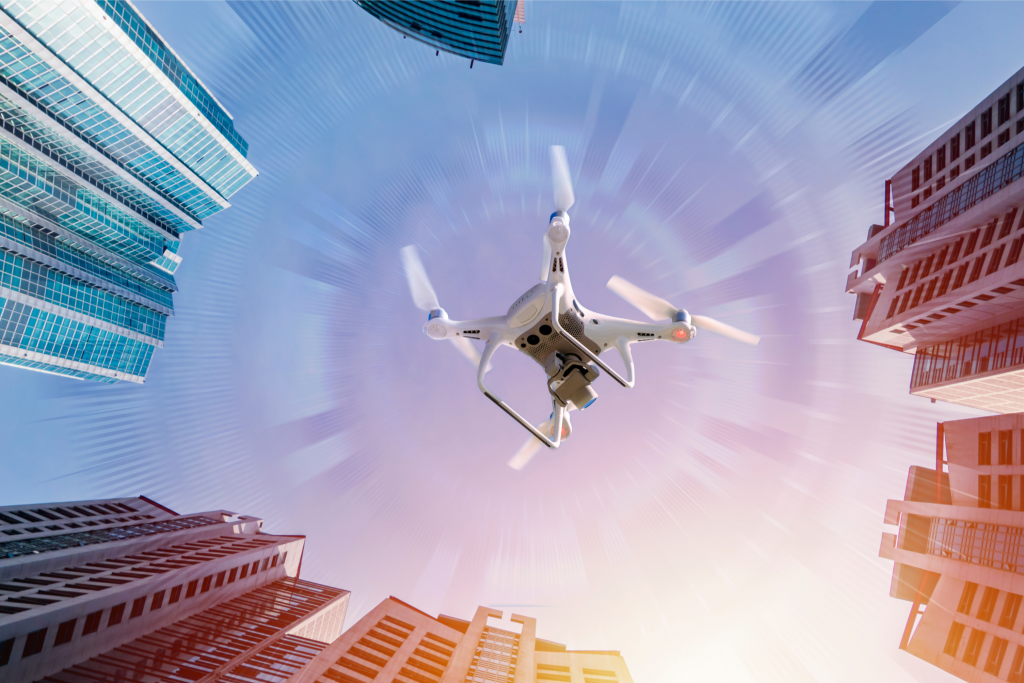
A bad workman blames his tools, but can a good workman get even better results by switching up theirs?
That was what we set out to evaluate when we looked into using drones for window cleaning. In theory, they could make hard to reach areas of the building more accessible while ensuring safety for the operative on the ground, but can they do a better job than the methods we’re using currently?
Testing out the drone technology
Highly experienced, our Window Cleaning Manager Jamie Farrell recently oversaw a test clean on a difficult-to-access elevation of a client’s commercial buildings in Bath. The client had expressed an interest in the technique, and we were intrigued to find out what could be achieved with trialling the tech.
Change is not always easy, but Jamie wants to keep an open mind, “The client was delighted with the clean, and certainly the results were a great improvement from the start of the day. However, the professional in me could see that an operative working by hand would have achieved a higher standard, but perhaps for those not looking with that professional eye, the differences are not great.”
What can drones bring to window cleaning?
It was a valuable experience and we learned that, like most things, there are some pros, and some cons.
First up for the pros is the speed at which an effective clean can be achieved. Not only the time on site to complete the job, but also potentially the timeframe to get a job delivered, as you wouldn’t need the highly qualified IRATA personnel that you do for a rope access clean. So, if you needed a clean done at short notice, drones could present a good solution.
Drones are also especially suited to certain façades, such as a sheer glass fronting, where the cleaning solution runs off very smoothly and doesn’t leave marks behind, and also clearly offers a good solution for areas that are inaccessible or difficult to access.
On the other hand, drone cleaning is likely to come at a higher cost, because of having to acquire the new technology and train operatives to a high standard.
Wind can affect drone operations. This didn’t impact our trial, though Jamie noted that the pilot controlling the machine did at one stage express concerns and the weather being experienced was certainly not of a type that would not have caused comment regarding the safety of a rope access team. Some form of closure may also be required by authorities, to keep the area below drone operations clear.
It is also quite possible that drones wouldn’t be acceptable in certain areas, either because of bans in place due to security reasons or because those inside the building might not understand what they are being used for and raise concerns.
Finally, and for us, a real hurdle to overcome, is that the final result doesn’t yet meet our high standards.
What is drone cleaning competing with?
Reach and wash water-fed poles can extend several storeys up. More complex – and expensive – technologies are generally only deployed when the ceiling for this simpler solution is exceeded.
One option is the Building Maintenance Unit (BMU) or cleaning cradle, a permanently installed piece of equipment. This is an expensive option and needs to be considered as part of the fabric of the building, which is why many don’t have one. Vehicle-mounted access platforms, which we operate, are another alternative.
Large equipment extending up can mean road/pavement closure or parking disruption, so many clients opt for rope access.
Operatives abseiling down the side of a building might look like something from a movie, but rope access is a well-established technique. As an established cleaning company, we own our equipment and maintains it to the highest level, and our specialists are fully IRATA qualified. Under these conditions, rope access is extremely safe and provides a really high standard of cleaning and exceptional finish.
Looking ahead
Drone technology used for window cleaning is in the early days of adoption but if the technology continues to advance with improved cleaning capabilities and cameras, the costs of purchasing drones fall, and other developments are made, this could lead to the adoption of a wider range of cleans in the future.
Whilst we weren’t able to evidence an improvement in cleaning outcome, drones could enable us to offer flexible services to meet differing needs. As with the use of systems like Extending Reach and Wash, they can’t match the hands-on attention to detail of a skilled operative standing up close to what they are cleaning, but they offer a useful and cost-effective solution in some situations.
There are also further options yet to explore. Façade-cleaning robots that stay next to the frontage rather than flying free are an evolution from robot hoovers and another recent development.
The tools of our trade have changed and will continue to change. What will always remain is the need to live and work in a pleasant and hygienic environment. We will continue to seek ways to improve our service offering for clients.
If you’d like to find out more about how we can support you with window cleaning in the most effective way to suit your needs, please contact The Tudor Group today.

